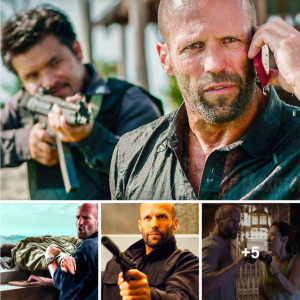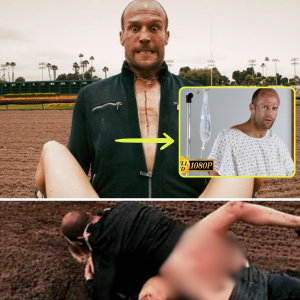In the world of high-octane action films, few actors command the screen like Jason Statham. Known for his steely demeanor, relentless energy, and impeccable fighting skills, Statham has carved out a niche as the ultimate action hero. But what happens when this cold, unflinching assassin encounters something he can’t control—his own burning desire? In a scene that lasts a gripping 45 minutes, the stoic assassin finds himself unraveling, and the result is a masterclass in tension, emotion, and raw physicality.

The scene begins with Statham’s character, a trained killer, meticulously preparing for another mission. His eyes are cold, calculating, and devoid of emotion—hallmarks of a man who has spent his life perfecting the art of detachment. But as he waits in the shadows, poised to strike, a complication arises: a young woman, caught in the wrong place at the wrong time, suddenly becomes the focus of his attention. What should have been another routine kill turns into something much more complex as the girl, unaware of the danger she’s in, begins to stir something deep within him.
As the minutes tick by, the tension between them becomes palpable. Her every move, every breath, seems to chip away at the icy exterior he has spent years cultivating. Statham’s performance is nothing short of mesmerizing as he transitions from a man in control to one who is slowly but surely losing his grip. His eyes, once cold and emotionless, now burn with a different kind of intensity. They flicker between his deadly focus and an unspoken desire that he cannot suppress.
The camera captures every nuance of his internal struggle—the way his jaw clenches, the subtle shift in his posture, and most notably, the heavy breathing that begins to take over. This isn’t the quick, shallow breath of exertion we’re used to seeing in action scenes. No, this is something deeper, more primal. It’s the kind of breathing that signifies a battle being fought not with fists or weapons, but with one’s own instincts and desires.
For 45 minutes, the scene holds the audience in a vise-like grip. The girl’s arousal, though understated, is enough to ignite something in the assassin that he cannot ignore. Her presence alone becomes a catalyst, forcing him to confront emotions he thought long buried. The once-clear line between predator and prey blurs as he grapples with the reality that this girl, this moment, is unlike anything he has faced before.

Statham’s mastery of physical acting comes to the forefront here. He doesn’t need words to convey the turmoil within him; his body language says it all. The way he paces, the way his chest rises and falls with each breath, the way his eyes follow her every movement—it’s a dance of restraint and release, of wanting and holding back. The heavy breathing, which initially seemed like a simple physiological response, becomes a symbol of the internal storm raging within him.
As the scene reaches its climax, the assassin’s resolve finally breaks. The burning desire in his eyes is no longer something he can hide, and in that moment, the cold assassin we once knew is gone. What remains is a man stripped of his defenses, vulnerable in a way he never anticipated. The girl, too, is changed by the encounter, her own arousal now mirrored in the man who was once her would-be executioner.

This 45-minute sequence is a testament to Jason Statham’s ability to portray not just the physicality of an action hero, but the complexity of a character in conflict with himself. It’s a reminder that even the most hardened of individuals are not immune to the power of human connection and desire. The cold assassin may have been trained to kill without emotion, but in this moment, he is as human as any of us—caught between duty and desire, between the life he knows and the one he never expected to want.


In the end, it’s the burning eyes and the heavy breathing that stay with us—a reminder that even in the world of action and adrenaline, there is room for depth, vulnerability, and the unexpected power of arousal.





